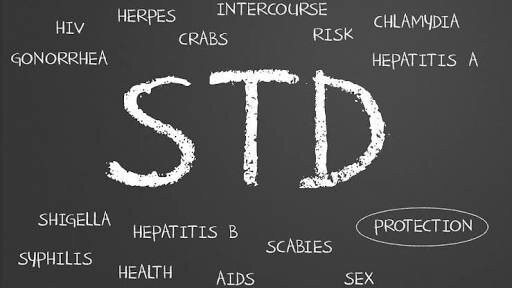Youth and adolescence are transforming times characterized by relational exploration, personal growth, and self-discovery. Even while these encounters might be exciting, it's critical that young people put their sexual health first. Once one becomes sexually active, it is incredibly important to protect yourself from infections that are transmitted sexually. The persistence of these infections and their symptoms results into a disease. It is known that sexual contact, including vaginal, anal, and oral sex, can spread more than 30 different bacteria, viruses, and parasites. A common misconception exists regarding the transmission of STIs where it is widely believed that this only occurs during penetrative sex i.e., entry of the penis inside the vagina or anus. However, any act that causes exchange of infected fluid via any route, i.e., via oral sex, anal sex or blood transfusion can facilitate transition STIs. It is imperative to dismantle the narrow notion that STIs are exclusively linked to specific sexual acts.
There are different types of STIs depending on the causative agent. STIs, caused by microscopic organisms invisible to the naked eye, manifest in diverse forms. Infections that can be treated by a simple course of antibiotics include Gonorrhea, Chlamydia, Trichomoniasis, Syphilis and other less common ones. These infections are usually present with:
a. Itching around the genitalia.
b. Smelly, discolored (green, or yellow) and persistent vaginal discharge
c. Ulcers (breaks in skin) around the genitals or mouth
d. Painful sex
e. Sometimes a skin rash
f. Painful, and frequent burning urination in females.
Whereas in men:
a. Asymptomatic
b. Painful urination
c. Yellow or greenish pus-like discharge from the tip of penis
d. Painful ulcers (punched-out lesions) on and around the penis
e. Painful swellings around the inner thighs
If you happen to notice any of the symptoms of STIs after having unprotected sex (not using condoms or dental dams) or exchange of bodily fluids such as vaginal fluid, semen and blood with another person, then the first thing to do is visit your doctor. In the context of Nepal, health care centers often employ a syndromic approach to treat STIs. If your doctor finds that you have a constellation of these symptoms along with history of unprotected sex, potential risky behavior (Such as Intravenous drug use and exchange of non-sterile syringes) and similar symptoms in your partner, antibiotics covering most of these common infective organisms will be prescribed. It is important to understand that the infections will only be treated if the full course of medicine is taken and in accordance with the directions provided. To prevent recurrence, condoms and dental dams have to be used in all of the subsequent sexual activities.
There are some STIs that once you’re infected with, will recur time and again and don’t completely leave the body. This includes Herpes, Hepatitis B, Genital warts, and HIV/AIDS. However, once the diagnosis is made, there is medicine and treatment that makes life easier and prevents transmission to others. Testing for HIV and hepatitis is commonly done through blood tests available in most district hospitals. For herpes and genital warts, consultation with a general practitioner or dermatologist is advised. There are safe and very effective vaccines for HPV and hepatitis B.
The shame and stigma surrounding STIs can be a barrier to seeking testing and treatment. It's essential to recognize that STIs are common, and getting tested is a responsible and proactive step towards ensuring one's own health and the health of sexual partners.
It is important to know that STIs are very common. According to the World Health Organization (WHO), over a million sexually transmitted Infections (STIs) are contracted worldwide each day, most of which have no symptoms. An estimated 374 million new cases of one of the four treatable STIs—chlamydia, gonorrhea, syphilis, and trichomoniasis—occur each year. It is estimated that about 500 million individuals aged 15 to 49 have a genital herpes simplex virus (HSV or herpes) infection. An infection with the human papillomavirus (HPV) is linked to about 311 000 cervical cancer deaths annually.
The most important thing to do if you suspect that you have an STI is to keep calm! You’re on your way to getting treated and the first step is recognizing something’s not right! Visit your doctor, take your partner to get tested and get treatment! After the initial treatment, remember to always, always, always practice safe sex! Refusal to adhere to safe practices by a partner should be non-negotiable, reinforcing the fundamental importance of individual and collective responsibility in the realm of sexual health.
